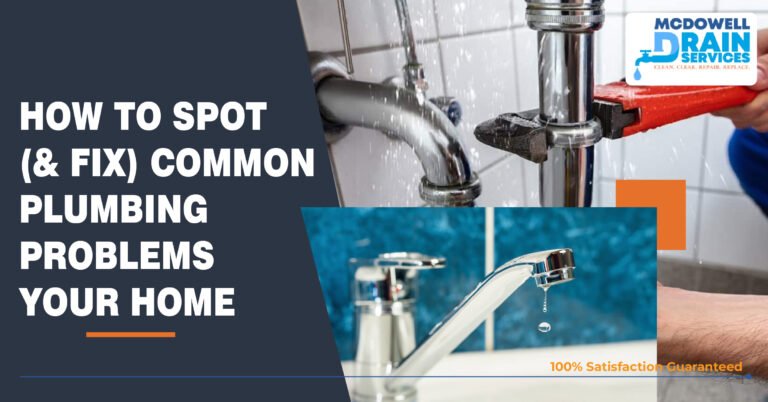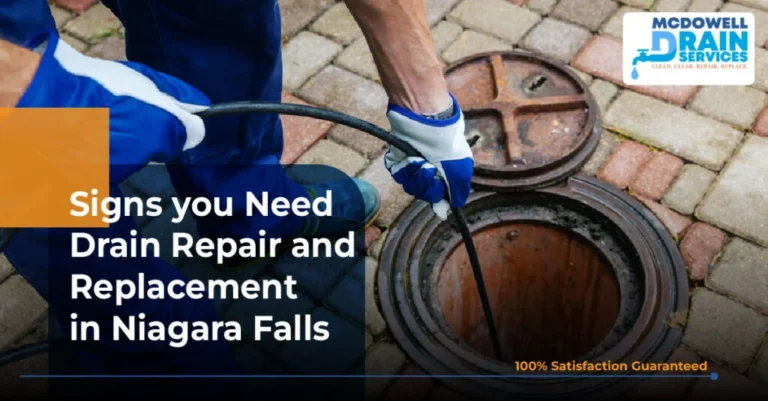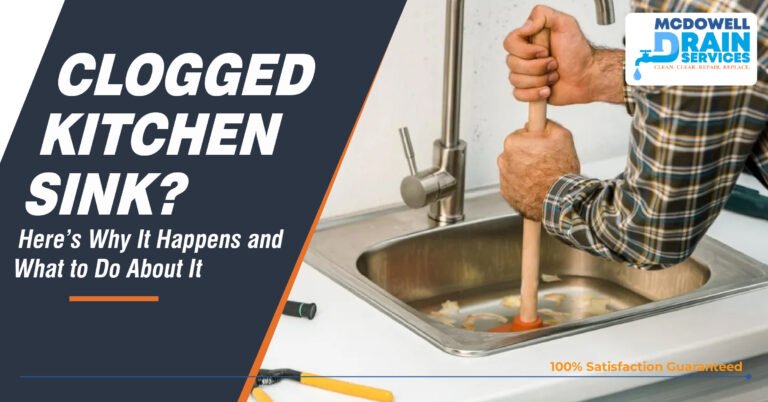Basement flooding is one of the most stressful—and costly—surprises a homeowner can face, especially in the Niagara Region, where seasonal rains, rapid snowmelt, and aging infrastructure combine to raise flood risk. Whether you live in Niagara Falls, St. Catharines, Welland, or Thorold, acting quickly and methodically can dramatically reduce damage and health hazards.
At McDowell Drain & Waterproofing, we’ve helped hundreds of local homeowners recover from basement floods. Here’s our professional guide on exactly what to do if your basement floods—and how to protect your home long-term.
1. Stay Safe First
Your first priority is personal safety. Floodwaters can hide electrical hazards, sharp debris, or sewage contaminants.
Shut Off Electricity
Locate your main breaker and turn it off before entering a flooded area. If water reaches outlets or baseboards, risk of electrocution is high.
Avoid Deep or Flowing Water
Even shallow water can conceal nails, glass, or live wires. If water is above ankle height—or if it carries a strong current—wait for professionals.
Call McDowell’s Emergency Drain Services
If water continues to rise, contact our 24/7 response team. We deploy high-capacity pumps and flood trucks to stop further intrusion.
2. Stop the Source (If Possible)
Identify and halt the cause of the flood when you can do so safely.
Inspect Pipes & Fixtures
Look for obvious leaks in exposed plumbing or water heater lines. A burst supply line can often be isolated by shutting a nearby valve.
Reset or Replace Your Sump Pump
If your pump has failed, switch to a manual backup or run an emergency sump pump installation.
Clear Gutters & Downspouts
Blocked downspouts force water toward your foundation. Sweep out debris and ensure extensions direct water at least two metres from your walls.
Check Weeping Tile & Exterior Drainage
Clogged perimeter drains can be cured with a professional weeping tile replacement or a quick camera inspection.
In heavy rains, hydrostatic pressure forces water through tiny wall cracks—preventive interior waterproofing is your long-term solution.
3. Document the Damage
For insurance claims, thorough documentation is vital.
Photograph & Video
Walk through your basement and capture wide shots of standing water, close-ups of damaged items, and any structural cracks or bowing walls.
Note Water Sources
Is the flood from overland runoff, a sewage backup, or a burst appliance? Insurance coverage often differs—“overland water” vs. “sewer backup.”
Record Time & Date
Time-stamp your footage or keep written notes. Insurers may require exact details for coverage approvals.
4. Begin Water Removal
Getting water out quickly reduces damage and mold growth.
Small Puddles & Spills
A wet/dry shop vacuum can clear a few inches. Move from high spots toward drains.
Major Flooding
For depths exceeding a few inches—or contaminated water—call McDowell to deploy our pump trucks and rapid-flow hoses. We’ll also inspect for structural risk.
Why Professional Removal Matters
Our high-volume pumps remove water 10× faster than consumer vacuums. Faster drying prevents foundation erosion and mold proliferation.
5. Dry It Out
Mold can colonize within 24–48 hours, so thorough drying is crucial.
Airflow & Dehumidifiers
Position high-powered fans in corners and run a commercial dehumidifier on continuous mode.
Open Windows & Doors
When outdoor humidity is lower than inside, natural ventilation accelerates drying.
Lift & Elevate
Remove wet furniture and store on blocks. Prop wet rugs to air-dry both sides.
If you detect musty or moldy odors after 48 hours, schedule our mold prevention consultation.
6. Clean & Disinfect
Floodwaters often carry bacteria, chemicals, or sewage.
Discard Porous Materials
Soaked carpets, insulation, drywall, and cardboard should be removed and replaced.
Sanitize Hard Surfaces
Scrub concrete floors and block walls with a bleach solution or commercial anti-mold cleaner. Rinse thoroughly.
Dry Again
After cleaning, continue drying until moisture levels are safe (<15% relative humidity).
7. Schedule a Professional Inspection
Prevent future disasters by having McDowell’s experts assess your home:
Foundation Crack Repair
We use hydraulic cement and polyurethane injections to seal active leaks.
Sump Pump & Backup Testing
We verify your primary and battery-backup pumps are operational and set to the correct float levels.
Backwater Valve Evaluation
A working valve prevents sewage backflow; ask about our backwater valve installation.
Weeping Tile Upgrade
Clogged or absent perimeter drains are replaced with geotextile-wrapped tile tied into your sump system.
8. Location-Specific Flooding Risks
Niagara Falls
Clay-heavy soil and steep slopes make homes here prone to pooling.
Guide: What to Do If Your Basement Floods in Niagara Falls.
St. Catharines
Mixed old/new foundations suffer poor grading and storm surges.
Read: Flood Prevention Tips for St. Catharines.
Welland
High water table and canal proximity demand robust drainage.
Learn: Flooding Prevention for Welland Homeowners.
Thorold
Historic homes, aging pipes, and steep terrain create unique challenges.
Protect yours: Basement Protection in Thorold.
9. DIY vs. Professional Cleanup
| Task | DIY | Professional (McDowell) |
|---|---|---|
| Water Removal | Wet/dry vacuum (small) | Pump trucks & rapid-flow hoses |
| Mold Remediation | Bleach & elbow grease | Industrial spraying & HEPA vacuum |
| Structural Inspection | Visual checks | Thermal imaging, crack repair |
| Drainage Upgrades | Gutters & simple grading | Weeping tile, sump system installs |
10. How McDowell Drain & Waterproofing Can Help
- 24/7 Emergency Drain Services
- Advanced Sump Pump Installations
- Exterior Basement Waterproofing
- Interior Basement Waterproofing
- Backwater Valve Systems
- Drain Repair & Trenchless Sewer Replacement
- Mold Prevention & Cleanup
With 45+ years of Niagara-region expertise and Google-Guaranteed status, we deliver trusted, code-compliant solutions.
FAQs
Q1: Does home insurance cover basement flooding?
A1: Only with “overland water” or “sewer backup” add-ons.
Q2: What’s the fastest way to dry after a flood?
A2: Commercial dehumidifiers, directed fans, and professional drying if mold is present.
Q3: Can I seal walls myself to prevent leaks?
A3: DIY sealants are temporary. Interior waterproofing is long-term.
Q4: How often should I test my sump pump?
A4: Every three months—especially before storm seasons.
Q5: How do I stop future flooding?
A5: Install a sump pump with backup, maintain gutters/downspouts, add backwater valves, and upgrade weeping tile.





